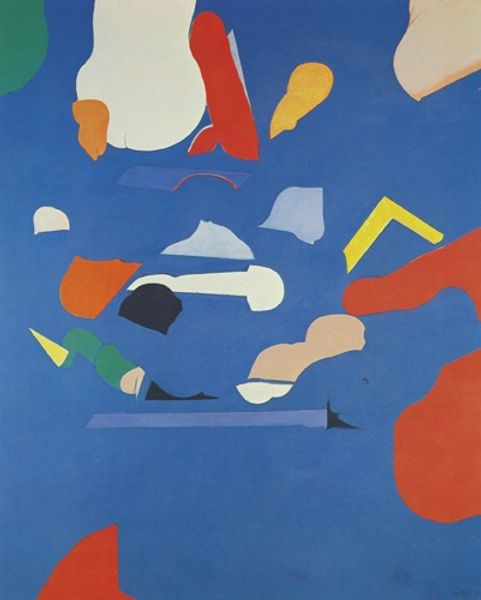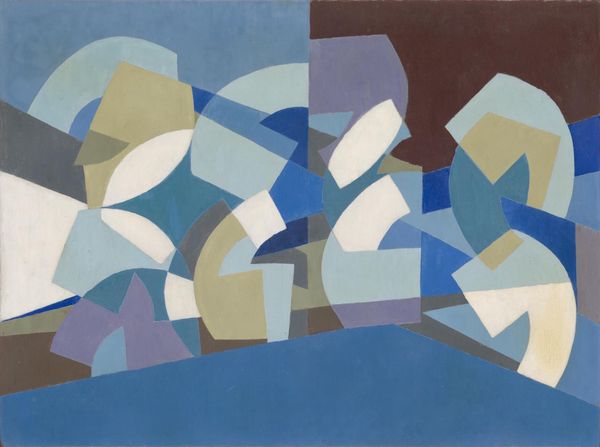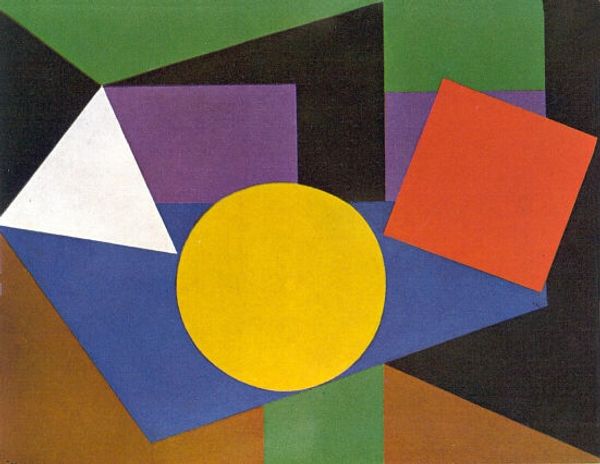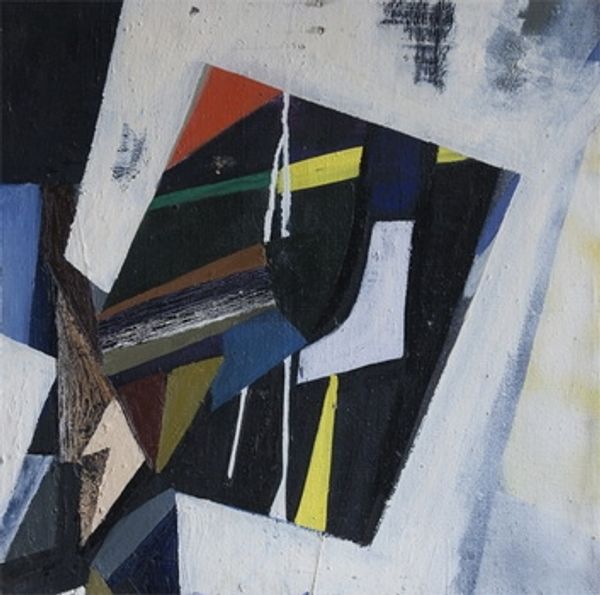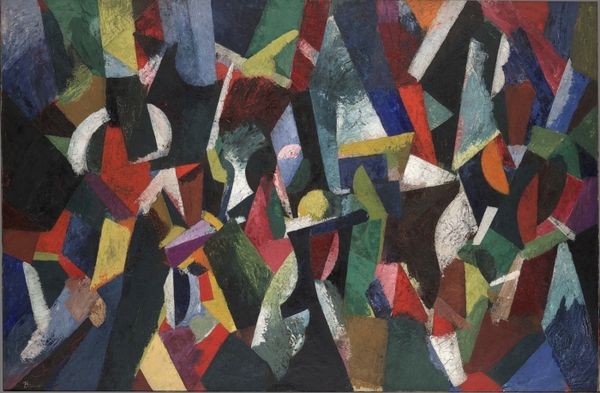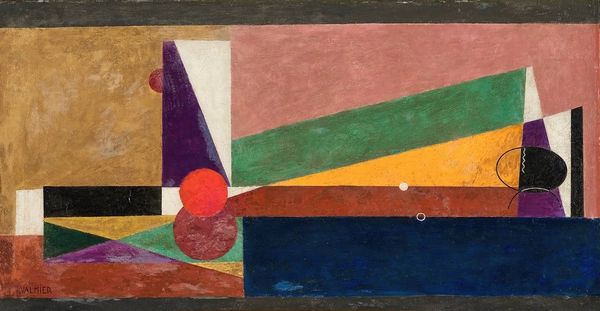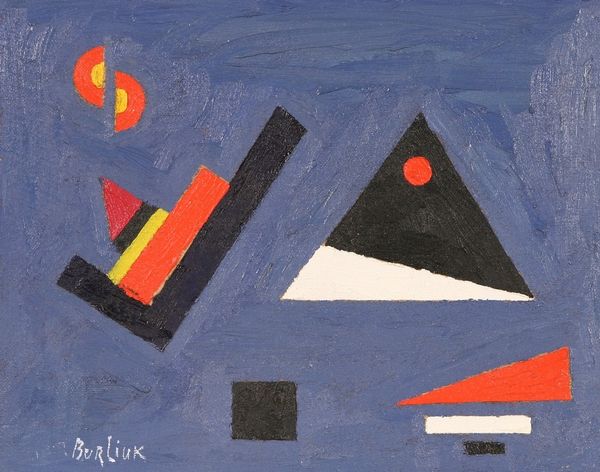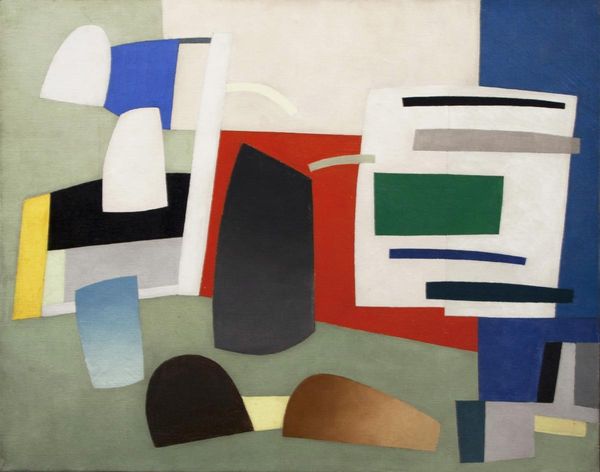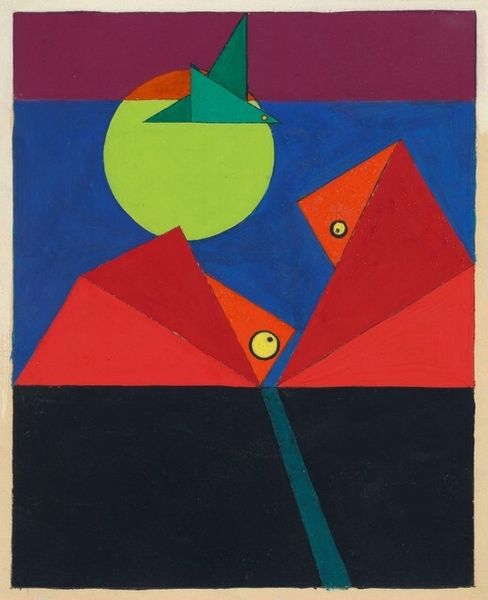
oil-paint
#
cubism
#
oil-paint
#
form
#
oil painting
#
geometric-abstraction
#
abstraction
#
modernism
Copyright: Amedee Ozenfant,Fair Use
Editor: This is Amédée Ozenfant’s "Synthèse," an oil painting from the early 20th century. It strikes me as a bold experiment in form, with its sharp geometric shapes juxtaposed against the softer, more ambiguous forms below. What elements of composition do you find most compelling? Curator: Immediately, the tension between the rigid triangular planes in the upper register, rendered in a somewhat industrial palette of green, red, and blue, and the nebulous cluster of circular forms at the base demands our attention. Ozenfant seems to be deliberately investigating the interplay between clearly defined structure and amorphous shape. Notice how the texture shifts within these planes. Editor: Yes, the triangles are quite smooth, while the dark area seems almost textured. Curator: Precisely. This juxtaposition invites semiotic inquiry: what systems of meaning are built via geometry, color, and texture? I am curious about the negative space surrounding the circles. Note how these dark fields both separate and connect these visual elements, contributing to a sense of depth despite the two-dimensional surface. Also, observe how the circular forms echo one another across the visual plane. It creates a compositional call-and-response. Editor: So, by analyzing those formal aspects, we are able to approach an interpretation? Curator: Certainly. In focusing on form, we can infer much about the artist's intentions. This piece acts as an investigation into fundamental components of artmaking. Consider Ozenfant’s project: purging excess and exploring simple, lucid forms. How effective do you believe his use of stark, pure form communicates such ideals? Editor: I never thought of it that way before. Analyzing the pure forms clarifies Ozenfant’s artistic intention so well. Thanks! Curator: It has been enlightening to share the value of structural analysis as a path for artistic interpretations.
Comments
No comments
Be the first to comment and join the conversation on the ultimate creative platform.

